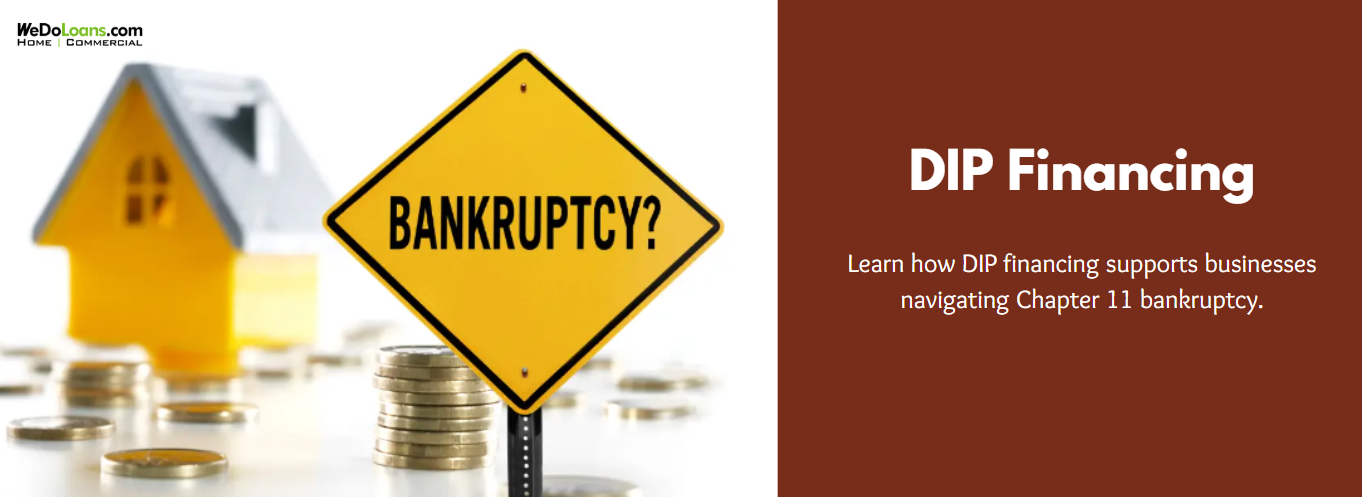
Securing financing can be a challenge for any business, but it becomes especially complex during bankruptcy proceedings. For businesses facing bankruptcy, debtor-in-possession (DIP) financing offers a solution.
What is DIP Financing?
DIP financing is a specialized type of funding available to businesses undergoing Chapter 11 bankruptcy. The term “debtor in possession” refers to the debtor’s continued control over their assets during and after the bankruptcy process.
The main purpose of DIP financing is to provide the debtor with relief from creditors while allowing them to retain control of their assets during the restructuring period. The debtor may not be entirely insolvent but requires time to reorganize their finances to meet obligations after bankruptcy.
How Does DIP Financing Work?
DIP financing is conducted under the oversight of a bankruptcy court. After filing for Chapter 11, a business can access DIP financing to cover specific operational needs, such as paying employees, purchasing goods, and meeting other financial obligations.
Court approval is required for any DIP financing agreement, which comes with a “superpriority” status. This means that the repayment of DIP loans takes precedence over existing debts, equity, and other financial claims. For lenders, this superpriority status makes DIP financing more secure, as it is likely to be repaid before other debts.
DIP Financing vs. Commercial Loans
DIP financing differs from standard commercial loans in several ways. Most notably, it is only available during Chapter 11 bankruptcy proceedings, and it requires court approval. Additionally, DIP loans have superpriority status, meaning they are repaid before other debts, including commercial loans, mortgages, and equity distributions.
Due to the higher risk associated with lending to distressed businesses, DIP financing typically comes with higher interest rates and less favorable terms than standard commercial loans. As a result, businesses should consider DIP financing as a last resort, used only when bankruptcy is imminent.
Benefits and Risks of DIP Financing
DIP financing offers several benefits, such as immediate liquidity, financial stability during bankruptcy, and a boost in stakeholder confidence. However, it also carries risks, including increased financial burden due to high interest rates, limited operational flexibility, and potential deterrence to unsecured creditors.
How to Obtain DIP Financing:
- Initiate Bankruptcy: File for Chapter 11 bankruptcy to access DIP financing.
- Formulate a Recovery Strategy: Develop a plan to regain profitability and meet future financial obligations.
- Identify a Lender: Find a lender willing to underwrite the DIP loan, often attracted by the superpriority status.
- Negotiate Loan Terms: Establish terms with the lender, including interest rates and repayment schedules.
- Secure Court Approval: Obtain approval from the bankruptcy court to finalize the DIP loan.
DIP Financing vs. Other Financing
DIP financing is uniquely tailored for businesses under bankruptcy protection, often serving as the only financing option during Chapter 11 proceedings.
When to Apply for DIP Financing?
DIP financing should be considered when a business’s financial situation has deteriorated to the point where bankruptcy protection is necessary. It is typically pursued after filing for Chapter 11 bankruptcy.
Conclusion
DIP financing allows businesses to continue operations during Chapter 11 bankruptcy restructuring. Although not ideal, it provides a necessary option when other financing avenues are unavailable.
